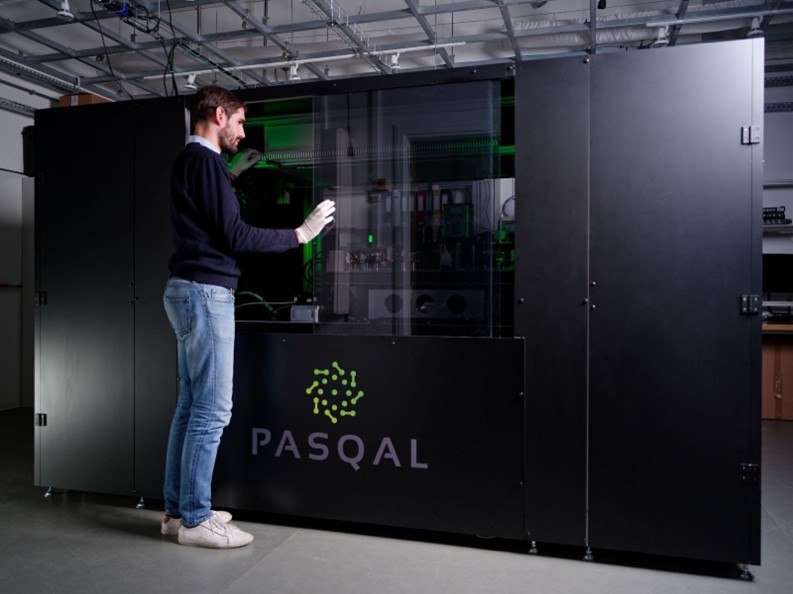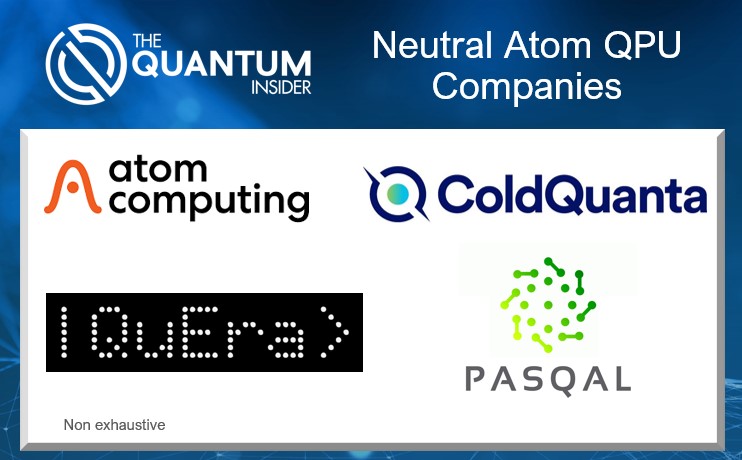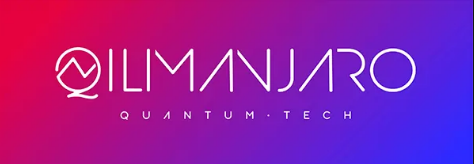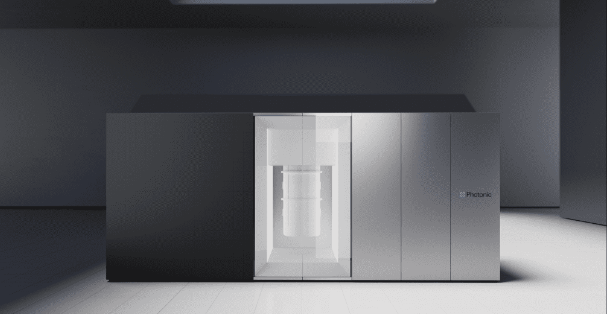Author: Loïc Henriet (CTO, PASQAL)
Long before digital computers took the world by storm, analog machines were helping humans model the world. The subtle nature of quantum physics invites us to revisit the distinction between digital and analog. Today, neutral atoms quantum hardware manufacturers like PASQAL are embracing this duality to develop hybrid digital/analog solutions to accelerate the path toward quantum advantage.
Digital vs analog computing
We have become so used to computers that we forget what wondrous and strange things they are. Here is an engine that, rather than converting heat into motion, transforms questions into answers. From this viewpoint, we have had computers for millennia. Already in the 2nd century BC the ancient Greeks were using hand-powered computers—the Antikythera mechanism—to predict astronomical positions and eclipses.

But what makes today’s computers special? And, why does quantum computing call for broader perspectives?
To solve a problem or answer a user’s query, a computer needs time to think. The thought process can occur continuously or in discrete steps. In other words, the computer can be analog or digital, respectively. Today, digital computing is the dominant approach, so much so that it has virtually become synonymous with computing. But it was not always the case, as before the 1960s both computing approaches were at equal footing.
There are several reasons why digital computing rose to dominance; universality and error resilience, to name a couple. However, analog computers were bringing computational advantage to humans long before their digital counterparts.
Analog computers applied to solving differential equations were introduced by Gaspard-Gustave Coriolis as early as 1836. These computers continued to evolve over the 19th and early 20th centuries and were used to predict tides and projectile trajectories. The Deltar analog computer (Figure 1) was used in the design and implementation of the Delta Works—a massive infrastructure project to protect densely populated areas of the Netherlands from the sea—from 1960 until 1984.

Revisiting analog computing with quantum
Quantum computers also come in digital and analog flavors. In digital quantum computing, we execute algorithms by implementing sequences of discrete operations, commonly known as quantum gates. In the analog case, the user has control over a small number of parameters and the quantum computer evolves towards an answer continuously.
One of the main reasons why classical computing became digital was error-resistance. This is because small errors are washed away by rounding in the digital setting. Basically, 0.99 is treated as 1 and 0.002 as 0 making bits robust to small errors. Moreover, every possible computation can be written in terms of digital operations. Digital computers are universal. Thus, you might wonder:
is the idea of analog quantum computing worth considering? Of course, it is!
Already in the classical domain analog computers have attractive features when used for solving specific tasks. If we renounce universality, analog computers can be used as powerful and energy-efficient accelerators.
Moreover, the question of analog vs digital is more subtle in the quantum domain. The continuous and the discrete are inextricably linked in quantum systems. You might have heard of the wave/particle duality. Qubits are analog objects up until the point when they are measured and become digital. This means that quantum computers, even digital ones, will always be somewhat analog. We are convinced that quantum computers should embrace this duality and exploit it as a resource.
Digital/analog duality
Neutral atoms quantum computers, like those developed by PASQAL have dual digital/analog capabilities. Computations in these quantum processors follow three main steps. First, the input information is encoded into a neutral atom array. Then, the information is processed by means of carefully tuned lasers. Afterward, the final state is read out, by taking a ‘picture’ of the atoms, to extract the result of the computation. Neutral atoms computers can run the processing step in digital or analog modes or in a combination of these two. This will allow to reap the benefits of quantum computing in the near and long term.

An engineer standing next to a neutral atoms quantum computerIn the digital approach, quantum algorithms are decomposed into a succession of quantum gates, from a set of pre-defined and calibrated operations. In neutral atoms computers, these gates are realized by shining short fine-tuned laser pulses onto the neutral atoms.
The main advantage of the digital approach is universality. Every possible operation on a quantum computer can be expressed as a (finite) sequence of gates. The problem is that today’s quantum computers can execute only extremely short sequences before the results become unreliable.
This is because individual gates are noisy and errors compound. Thus, even large (multi-qubit) digital quantum computers have very limited capabilities. In contrast, the analog mode is somewhat less versatile but also less susceptible to error (noise). Just like in the classical case, the analog approach is expected to bring early advantage in specific, yet critical, applications.
Here we wish to stress that this approach in general is distinct from the more restrictive analog approach called quantum annealing—a continuous-variable optimization technique advanced by D-Wave and other groups (see Insert 1).
| Insert 1: Analog quantum computing vs quantum annealing |
| Quantum annealing is a computational paradigm that allows solving a particular class of problem – optimization. While theoretically, any problem can be cast as an optimization problem, it is most suited to tasks that already have that form. In quantum annealing, a register of quantum elements is prepared in an initial state. Then with a time-dependent analog operation, the system is evolved to a final state, after which the solution is read out. This needs to occur slowly enough to stay close to good solutions to the problem. General analog computing, of the type used by neutral atoms quantum computers can do more than that: besides optimization tasks, also simulation tasks such as those in chemistry, physics and material engineering can be tackled. Furthermore, in combination with digital gates (a digital-analog approach), one can also perform variational algorithms such as quantum machine learning, differential equation solving and graph data analysis. |
Analog quantum advantage
The analog mode of neutral atoms quantum computers embodies Richard Feynman’s dream of using synthetic quantum systems to simulate nature. Neutral atoms quantum computers have already gone beyond classical computational capabilities modeling physical systems in the analog mode. They were used to simulate antiferromagnetism in 2D materials at a scale unreachable with classical hardware and for implementing programmable simulators for two iconic models of quantum magnetism.
These achievements are grounded on the unparalleled scalability of neutral atoms quantum processors and the noise-robustness of the analog mode. Their ability to effectively operate hundreds of qubits in the analog mode is the key for reaching beyond classical capabilities. Moreover, neutral atoms quantum computers can implement a wide variety of analog operations. Thus, there is a very positive balance between universality and error-resilience.
There are several neutral atoms quantum hardware manufacturers like PASQAL, QuEra Computing, ColdQuanta and Atom Computing which are taking decisive steps to bring quantum advantage to industrial applications. Some are working on analog approaches (e.g. Pasqal), with others focussed on gate approaches (e.g. Atom).

One such very promising direction is solving differential equations, echoing the history of classical computing. To advance this program, we introduced powerful differential equation solvers compatible with near-term quantum hardware and tested them in paradigmatic engineering problems, like modeling structural integrity.
Interestingly, solvers’ performance is boosted when executed in a hybrid digital/analog mode. While single-qubit gates are used for tuning and steering the output towards a solution, multi-qubit operations are needed to tap into the power of ‘entanglement’, a resource that is intrinsically unavailable to classical computers. In digital mode, these entangling operations are decomposed into a large number of two-qubit gates. However, in an analog setting, the natural interaction dynamics between atoms entangles them efficiently in a short time with fewer errors. This allows the overall system to evolve towards the desired result efficiently. Differential equations are critical across a wide range of industries. Thus, the impact of quantum advantage in this area could be immense.
Neutral atoms players have also relied on their hardware’s analog mode to enable novel quantum-enhanced machine learning techniques. So far, their focus has been on graph-related problems where for instance QuEra Computing published promising results for solving Maximum Independent Set problems with applications in for instance the telecoms sector, finance and logistics. And PASQAL showed how to solve graph classification problems with an analog quantum method called quantum evolution kernel method (QEK), which can provide advantages over classical kernels in terms of accuracy and computational costs. They presented a first application of QEK in toxicity screening of chemical compounds and are researching applications for identifying optimal chemical reaction pathways.
Conclusion
Neutral atoms quantum hardware manufacturers like PASQAL are embracing the dual analog/digital nature of quantum computers. It will take years before digital quantum computers reach their full potential. This shouldn’t stop the advent of quantum advantage. Classical analog computers gave us superhuman computational abilities long before the digital revolution. Their quantum descendants could do the same.
Today it is impossible to entangle and operate qubits digitally, even in small numbers. We can do this with hundreds of qubits in analog mode, today. And teams are already exploiting this capability to tackle multiple exciting problems and results are extremely promising.
If you found this article to be informative, you can explore more current quantum news here, exclusives, interviews, and podcasts.

















